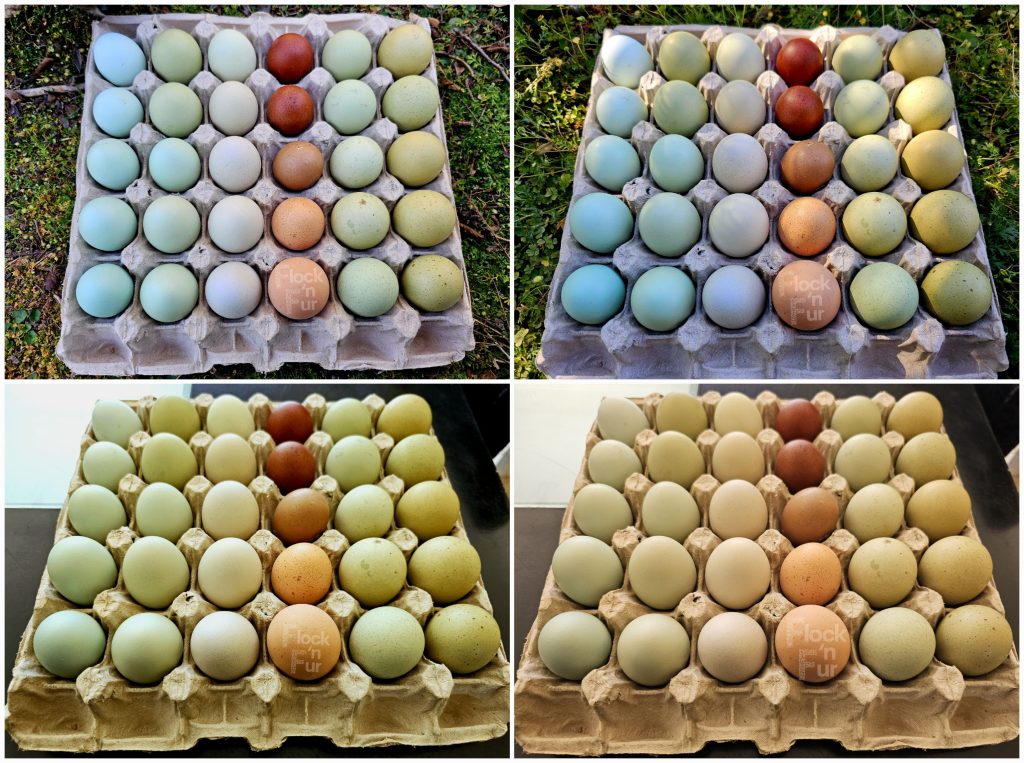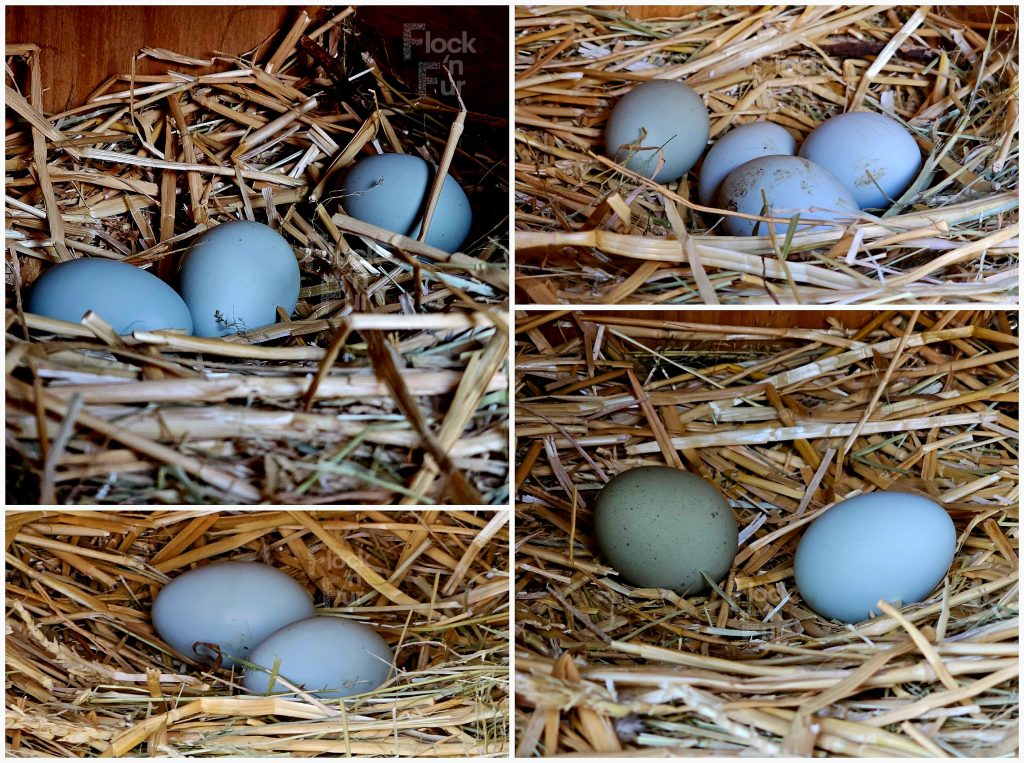
Understanding Why Eggshells Appear Differently
Chicken eggshells display an interesting array of colours. However, even eggshells of the same colour, particularly blue and green, can present surprising variations depending on how they’re lit or photographed.
Colour Perception and Light Sources
- The Spectrum of Light: Both natural sunlight and artificial lights emit light, but the composition of that light differs. Sunlight contains a relatively balanced mix of visible colour wavelengths. Artificial lights often emphasise certain parts of the spectrum (e.g., some may be stronger in yellows).
- Colour Reflection: An object’s perceived colour depends on the specific wavelengths of light it reflects. A blue egg reflects blue wavelengths and absorbs other colours.
- White Balance: Cameras (and our eyes) attempt to interpret the correct colour for ‘white’ in various lighting conditions. This adjustment, aimed at making whites appear neutral, is known as white balance. When the white balance is not accurately set, it can distort the appearance of other colours. The colours present in a photograph’s background can influence the white balance setting, thereby altering the perceived colour of subjects within the image. For instance, photographing a blue egg against a bright yellow background, as opposed to a plain white background, will result in the egg’s colour appearing differently in each scenario due to the camera’s compensatory adjustments.

Metamerism: Unveiling the Mystery of Colour Variation
The phenomenon of metamerism is at the heart of these colour changes. Two colours may appear to match under one lighting condition but differ under another. This is because different light sources emit varying spectrums of wavelengths, altering how they interact with the eggshell’s pigments.
- Under Natural Light: Natural light’s balanced, full-spectrum properties allow eggshell pigments to reflect their colours faithfully. That’s why blue eggs look vibrantly blue and green eggs look vividly green.
- Under Artificial Light:
- Yellowish Light: Many artificial lights have a warmer, yellowish cast, meaning they emit more yellow wavelengths. This can make a blue egg appear whiter or less vibrant, and a green egg can take on a brownish hue.
- Lack of Specific Wavelengths: If an artificial light source lacks the wavelengths needed to properly reflect the blue or green colours, the egg won’t look as vibrantly coloured.
Additional Factors that can also play a rolle:
- Type of Artificial Light: The colour change will be more drastic with some artificial lights than others. For instance, it will be less noticeable under cooler white LED lights than warmer yellows.
- Egg Pigment Intensity: More deeply pigmented eggs might experience a less intense colour change under artificial light.
How Lighting Changes Blue and Green Egg Appearance

Here’s how lighting impacts blue and green egg colours:
- Blue Eggs: The distinctive blue colour in chicken eggs is primarily due to the pigment biliverdin. While sunlight contains an array of wavelengths that illuminate this pigment for a true blue look, some artificial lights, particularly those with stronger yellow or red casts, might reduce the amount of blue wavelengths. This can make the egg appear paler or less intense.
- Green Eggs: These beauties boast a combination of blue (biliverdin) and brown (protoporphyrin) pigments. Under natural light, a visual balance occurs between these colours. However, some artificial lights can skew towards warmer hues. When the intensity of blue wavelengths is diminished, the brown component of the green eggshell can become visually stronger, causing the egg to look browner overall.
The Mystery of the ‘Bloom’

Another layer of complexity lies in the ‘bloom’ or ‘cuticle’ – a thin, protective layer formed on the eggshell shortly before laying. Here’s how the bloom influences colour perception:
- Light Diffusion: The bloom’s slightly uneven surface scatters light. In dim settings, like inside a nest box, the scattering enhances colour uniformity. Once outdoors with light coming from multiple sources, the scattering effect changes, potentially altering colour perception.
- Matte Finish: When intact, the bloom lends a matte finish. Depending on the light, this soft finish can enhance the depth of blue or green pigments.
- Subtle Colour Shifting Effect: The interplay between the bloom, eggshell structure, and lighting sometimes creates a subtle colour-shifting effect. Whilst not as drastic as true iridescence, this shift is more readily captured by cameras than the human eye. This can sometimes make subtle variations in colour more apparent, such as a blue egg seeming slightly greener towards its curved edges.
The Challenges of Egg Photography
Capturing the nuanced colours of blue and green eggshells accurately through photography brings forth more challenges:
- Camera Limitations: Camera sensors struggle to replicate the full adaptability and range of the human eye, affecting how subtle colours are reproduced.
- Lighting: Photographs depend heavily on their lighting source. Artificial lighting conditions can further exaggerate the shifts in colour.
- Editing and Image Display: Adjustments to brightness, contrast, or other image aspects can skew colours. Importantly, most cell phone cameras apply all these adjustments automatically. Displays on tablets, phones, and computers are subject to slight calibration differences, affecting hue display.
Tips for More Lifelike Egg Photography
- Utilise Natural Light: Opt for natural sunlight for your egg photos whenever possible to best capture the truest colours. Eggs containing blue pigments are best photographed early morning or late afternoon on a clear day when in the shade, even better with sunlight in the background. That will help you get a true representation of vivid blue eggs.
- Consider White Balance: If your camera supports manual white balance settings, use a white or grey card for greater colour accuracy.
There’s a unique charm and natural variability in how we perceive colours in everyday life. The beauty is partly in the shifts themselves!
